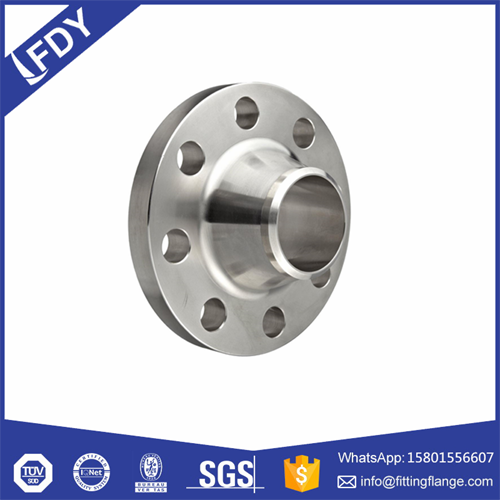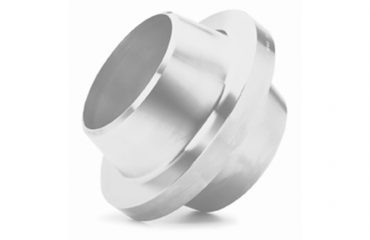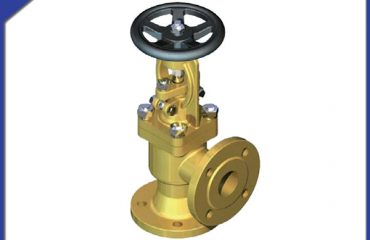
Alloy steel flanges are integral components in modern industrial infrastructure, serving as critical connectors in piping systems worldwide. Their unique composition and design make them indispensable across diverse sectors, from energy production to chemical processing. This guide explores essential aspects of alloy steel flanges, aiding professionals in selection, application, and maintenance.
Material Composition and Advantages
Alloy steel flanges derive their properties from carefully calibrated blends of iron and alloying elements. Chromium enhances corrosion resistance, molybdenum boosts high-temperature strength, and nickel improves toughness—key traits for harsh environments. Common grades like ASTM A182 F11 (1.25% Cr, 0.5% Mo) and F22 (2.25% Cr, 1% Mo) balance these elements to handle pressures up to 6,000 psi and temperatures exceeding 1,000°F, outperforming carbon steel in extreme conditions. This versatility allows them to operate reliably in both cryogenic systems and high-heat industrial processes.
Standardization and Compliance
Global standards ensure consistency in alloy steel flange manufacturing. The ANSI/ASME B16.5 specification governs dimensions and pressure ratings for flanges up to 24 inches, while B16.47 covers larger diameters. European markets follow EN 1092-1, with DIN standards remaining prevalent in regional applications. Compliance with these standards guarantees interchangeability, a critical factor in international projects. For example, a Class 300 flange manufactured to B16.5 dimensions will mate perfectly with any compatible flange regardless of production location.
Common Types and Applications
Weld Neck Flanges
Featuring a tapered hub that distributes stress evenly, weld neck flanges excel in high-pressure systems. Their gradual transition from pipe to flange minimizes turbulence, making them ideal for refineries and power plants handling volatile fluids at 1,500+ psi. The full penetration weld creates a permanent bond that withstands thermal cycling in steam pipelines.
Slip-On Flanges
Easier to align during installation, slip-on flanges require two fillet welds for secure attachment. Their lower cost makes them popular in low-pressure applications like water distribution networks and HVAC systems. While not suitable for extreme conditions, they provide reliable service in Class 150-300 systems operating below 600°F.
Socket Weld Flanges
Designed for small-bore piping (typically 2 inches and under), socket weld flanges use a recessed end to ensure precise alignment. Common in instrumentation lines and hydraulic systems, their single fillet weld creates a leak-tight seal for clean fluids like hydraulic oil and compressed air.
Blind Flanges
Used to seal pipeline ends or isolate sections, blind flanges feature solid discs with bolt holes matching companion flanges. They’re essential during system maintenance, allowing safe pressure testing and section isolation. In offshore platforms, they often serve as temporary closures during construction phases.
Installation Best Practices
Proper installation directly impacts flange performance. Surface preparation removes mill scale and debris, ensuring gasket contact. Torque sequence follows a star pattern to distribute pressure evenly, preventing flange warping. Gasket selection depends on media compatibility—PTFE works for chemicals, while metal gaskets suit high temperatures. For example, in sour gas applications, spiral-wound gaskets with nickel cores resist hydrogen sulfide corrosion.
Maintenance Considerations
Regular inspection prevents unexpected failures. Visual checks identify corrosion or gasket degradation, while ultrasonic testing detects hidden cracks. In coastal areas, galvanic corrosion from salt spray requires periodic coating with epoxy-based paints. Bolt retightening after initial operation compensates for gasket compression, maintaining proper sealing pressure.
Environmental Resistance
Alloy steel flanges resist various corrosive environments. Chromium-rich alloys handle oxidizing conditions like wet steam, while molybdenum additions combat pitting in chloride-rich environments such as seawater systems. In chemical plants, nickel alloys withstand acidic media that would rapidly degrade carbon steel components.
Understanding these aspects ensures optimal use of alloy steel flanges in industrial systems. Their combination of strength, versatility, and compliance with global standards makes them a cornerstone of modern piping infrastructure, supporting safe and efficient operations across critical industries.
 Language
Language Espanol
Espanol English
English Italian
Italian عربى
عربى
 Skype: chinamaker99
Skype: chinamaker99  Tel: 86-316-5120812
Tel: 86-316-5120812  Email:
Email:  Whatsapp:
Whatsapp: 

